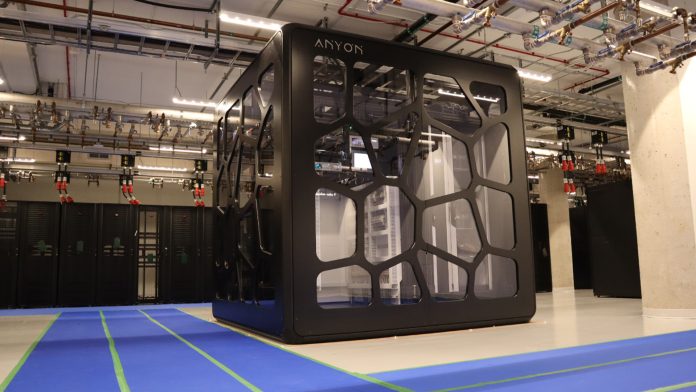Implementing quantum services with MonarQ: To the data centre and beyond.
The Monarq quantum computer was named in honour of the remarkable Monarch butterfly. Eastern Monarch butterflies make an annual migration from as far north as Québec through thousands of miles to as far south as Mexico. This impressive feat of grit and determination requires several generations of butterflies to complete the cycle and is essential for the ecosystem not just at the destinations of migration but all along the way.
Bringing MonarQ to the public research community in Québec and across Canada has not involved migrating thousands of miles, but it has been a process of a thousand steps, proving the journey to be just as important as the destination.
MonarQ’s journey: From hardware hosting to software development
One of the first steps on the MonarQ journey was choosing its hosting location. MonarQ was planned to be, and is currently situated in a data centre in Montréal which also houses the high performance computing clusters managed by Calcul Québec. Choosing to self-host the quantum hardware brought many logistical challenges – from managing electrical instabilities to painstakingly transporting all the oversized MonarQ parts safely through doorways and in and out of elevators.
However, that choice has opened the door to facilitate more areas of research, specifically hybrid classical-quantum computing. The MonarQ quantum computer had originally been planned solely with quantum computing in mind, but its physical proximity to high-performance computing clusters makes the process of hybrid computing substantially easier.

Hybrid computing is still an emerging area of research, but there is huge potential for applicability in many different disciplines. In comparison, the short term difficulties seem quite small – even the hours spent obsessively walking the data centre halls, measuring tape in hand.
The next major step in MonarQ’s journey is centered around software. If hardware is the most important factor in the usability of a quantum computer, software is a close second. Researchers required several different options for quantum software packages to use with MonarQ, so a small development project was started to explore building plugins. This would allow compatibility with the most commonly used quantum libraries.
The development team grew over time and started more projects, including a new transpiler to effectively interface new plugins, regular benchmarking of key hardware performance indicators, and post-calculation error mitigation.
Commitment to training and accessibility
The MonarQ quantum computer certainly is no exception to the challenges noisy intermediate-scale quantum era devices face, but optimising the software side can have a huge impact on results. We recognise that not only has our quantum software development team made substantial contributions to the usability and applicability of MonarQ, but it has also provided ongoing opportunities for interns and student hires to gain valuable experience in the field of quantum software. One of the MonarQ project’s major goals remains supporting the continued local development of highly qualified personnel.
This leads us to one of the ongoing aspects of our journey: training. From the beginning, a top priority for the MonarQ project has been the democratisation of quantum technology, especially in the context of access and opportunity across different research disciplines. Quantum technology is not well understood in the broader research community, so accessible training is essential to facilitate access to non-quantum disciplines.
From basic theory to more advanced quantum applications, we have provided and are continuing to develop hands-on workshops tailored to the needs of our diverse research community. Calcul Québec remains committed to accessible and practical quantum training – a critical component of quantum computing services worth substantial investment.
Long journeys can be frustrating, especially if the focus is solely on reaching the final destination. Our journey with MonarQ has reaffirmed for us the importance of embracing opportunities along the way to grow and learn, engaging our community so we can walk this challenging and exciting path together.
The acquisition of the MonarQ quantum computer was made possible thanks to the funding from the Ministère de l’Économie, de l’Innovation et de l’Énergie and Canada Economic Development for Québec Regions.
Lessons learned
- Self-hosting quantum hardware can be a difficult logistical challenge, but it brings a big pay-off in terms of understanding and control of the technology and facilitating complex systems like hybrid classical-quantum compute systems.
- Efficient and intuitive software can substantially improve the usability of the machine and the quality of the results. Accessible, optimised software is critical for good performance and a good user experience.
- Accessible and practical hands-on training is a critical component of quantum computing services that is well worth the substantial investment required.
Please note, this article will also appear in the 21st edition of our quarterly publication.









